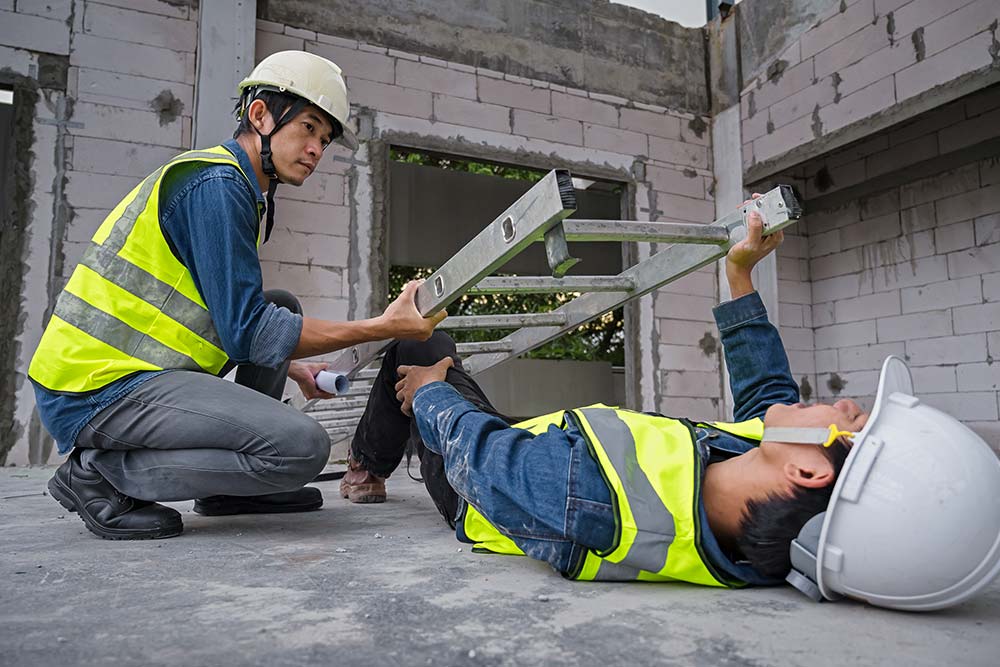Common Injuries Faced by Instrument Technicians On-Site
In industrial operations, instrument technicians are responsible for installing, calibrating, and maintaining a wide variety of sensors and measurement devices. Their daily routines may seem routine at first glance, but in reality, they work in environments filled with hidden dangers—electricity, high places, steam lines, chemical tanks, and rotating machinery, just to name a few.

Let’s break down some of the most common types of on-site injuries that instrument technicians may encounter, how to respond in emergencies, and what habits or systems can help prevent these accidents from happening in the first place.
1. Electric Shock — The Most Immediate and Dangerous Threat
Electricity is part of nearly every job an instrument tech touches. But even a moment’s carelessness—forgetting to confirm voltage isolation, assuming a cable is dead, or working on aging insulation—can lead to serious electric shock. These injuries can cause muscular convulsions, burns, loss of consciousness, or worse.
In the event of electric shock, the priority is to cut off power immediately and ensure rescuer safety. Never touch the victim directly—use insulated tools if needed. Check for breathing and pulse. If the person is unresponsive, initiate CPR and call emergency services.
Best prevention practice? Always test for live voltage, use warning tags, and work in pairs. What takes two extra minutes could prevent a fatal mistake.

2. Falls From Height — An Easy Risk to Underestimate
Instrument technicians frequently climb platforms, ladders, or tanks to install radar level transmitters or troubleshoot flowmeters. The more experienced a worker becomes, the more likely they are to skip harness checks or “just finish up quickly.” That’s when accidents happen.
Falls often result in broken bones, spinal injuries, or head trauma. First response should never involve moving the person. Call emergency services, stabilize the head and neck, and monitor breathing.
Prevention means checking anchor points, using certified harnesses, and enforcing safety belt use—especially in non-routine work.

3. Burns and Chemical Exposure — Small Mistakes, Big Consequences
Scalding can happen when someone accidentally touches hot piping, valve exteriors, or exposed steam lines. Similarly, opening a line or working near chemical tanks without proper protection may lead to acid burns or toxic gas exposure.
Burns must be cooled with running water for at least 15 minutes. Chemical exposure requires thorough rinsing and identification of the substance. Do not apply creams or neutralizers unless instructed by medical professionals.
Instrument technicians should always wear appropriate PPE: gloves, goggles, flame-resistant clothing, and in chemical areas, splash aprons and eye wash stations must be nearby and functional.

4. Cuts, Bruises, and Crushing Injuries — Frequent, but Often Ignored
It’s common to suffer cuts when threading cables through sharp ducts or changing sensors in cramped spaces. Dropping a wrench or sensor onto a foot can break toes or worse. While these are not life-threatening, improper handling can lead to infections or longer-term disability.
Key safety habits include wearing gloves, using anti-slip footwear, and keeping tools secure—not balanced on railings or piping.

5. Chronic Injuries and Occupational Illnesses — The Quiet Danger
While acute injuries get attention, long-term exposure to low-level toxins, repetitive strain, loud environments, or poor lighting takes a toll too. Instrument techs working near compressors, solvent tanks, or in dim control rooms can slowly develop respiratory issues, hearing loss, or eye strain.
These don’t cause emergency room visits but quietly degrade health over time. Regular health check-ups, proper ventilation, noise reduction, and scheduled rest all matter more than they’re often given credit for.
6. When Accidents Happen — What to Do
Whether minor or severe, all injuries must be reported to supervisors. Superficial injuries like minor cuts can be cleaned and documented. More serious incidents—electric shocks, burns, or falls—require immediate medical attention and formal reporting.
Companies should have emergency response protocols in place. First-aid kits, eye wash stations, fire blankets, and basic PPE must be accessible. Regular drills help workers understand their role in an emergency and reduce panic when real accidents happen.
7. Building Safety Into Daily Work
Field instrument technicians should never get too comfortable. Every task—no matter how routine—needs attention to safety. Key habits include:
- Always verifying electrical isolation before beginning any wiring work.
- Using PPE that’s appropriate for the job and environment, even for quick fixes.
- Double-checking work area conditions, especially in unfamiliar spaces.
- Working in pairs when entering confined spaces or heights.
- Continuing to learn and stay updated on safety practices, even as a senior tech.
Closing Thoughts
The work of an instrument technician touches nearly every corner of industrial safety and productivity. But that work must never come at the expense of personal well-being. Safety is not a checklist or a training video—it’s a daily discipline.
Every accident avoided is one less story that ends in regret. It’s up to every instrument technician, every supervisor, and every organization to ensure that the job gets done safely—and that everyone goes home in one piece.
